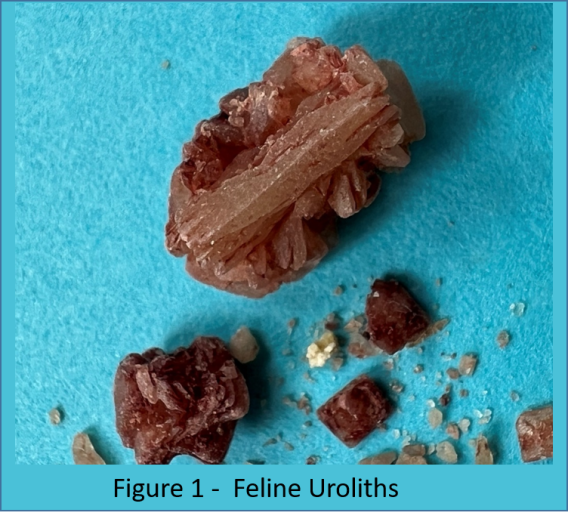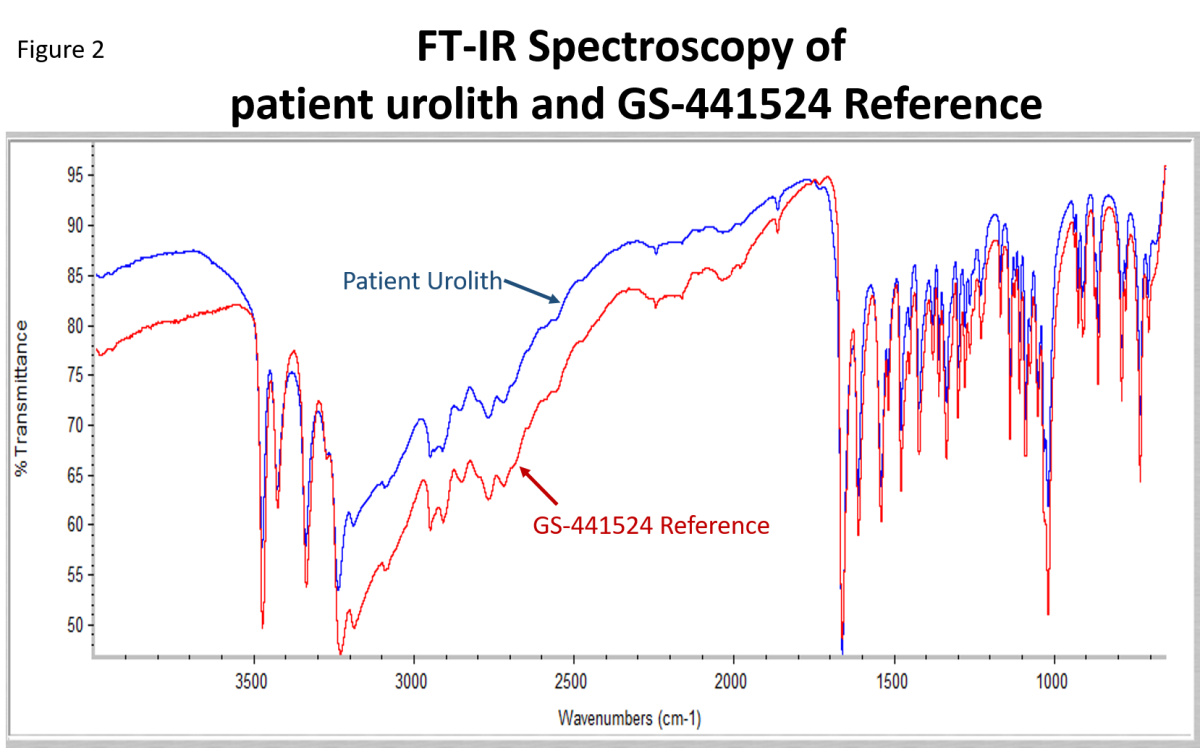Image of the month
Mysterious New Stone Type In Cats

Between January and April of 2023, the Minnesota Urolith Center received three atypical stone submissions (Figure 1). All three samples were retrieved from cats. All three cats were less than 1 year old. The cats were from North and South America. In each case, the stones’ infrared spectrographic pattern was identical. Typically, urinary stones contain high amounts of phosphorus, calcium and magnesium. In these cases, electron dispersion spectroscopy identified high proportions of nitrogen, carbon and oxygen.
Mystery solved. When asked about their medical histories, all three cats were diagnosed with Feline Infectious Peritonitis. All three were treated with either Remdesivir or its metabolite, GS 441524. We requested samples of their antiviral medications for analysis. The antiviral medication was a spectrographic match (Figure2). Stones were composed of GS 441524.

Following administration, GS 441524 is primarily eliminated in the urine. Although GS 441524 is very soluble in organic solvents like DMSO (10-59mg/ml), it is sparingly soluble in aqueous solutions like water (0.0004 to 0.1 mg/ml). Its limited solubility makes GS 441524 a prime candidate to form stones. Observing urinary signs in cats receiving Remdesivir or GS 441524 is an indication to look for stones. Seeing atypical crystalluria or uroliths may be an indication to limit medication dose (if possible) and increase water consumption to minimize stone formation.